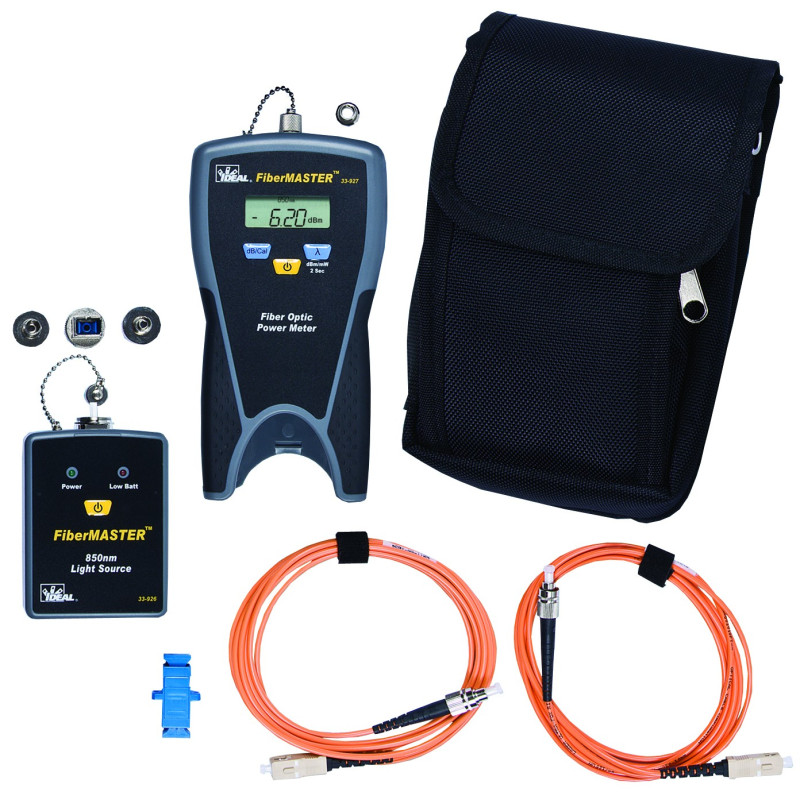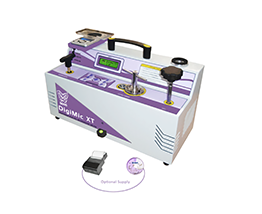The Relevance of an Optical Fibre Diameter Analyser in Maintaining Industry Requirements
The relevance of an Optical Fibre Diameter Analyser can not be overstated in the context of sector requirements. This technology guarantees exact measurements, which are essential for perfect signal transmission and reduced attenuation. By detecting disparities early, producers can copyright stringent high quality control measures. Nevertheless, the ramifications of these measurements expand past conformity. Discovering the broader effect on system efficiency reveals complexities that warrant further exploration.
Recognizing Optical Fibre Diameter Evaluation
Optical fibre diameter evaluation plays a vital role in making sure the performance and dependability of fibre optic systems. Precise dimension of fibre diameter is essential, as it directly affects signal transmission efficiency and general system honesty. Variants in diameter can lead to increased attenuation, lowered transmission capacity, and greater susceptibility to environmental elements.
By employing accurate dimension methods, suppliers can maintain stringent quality assurance, making certain that fibres satisfy industry standards. This analysis likewise assists in the identification of defects or variances throughout production, permitting for timely restorative actions.
In addition, recognizing the diameter specifications aids in the selection of suitable ports and installations, therefore enhancing compatibility within the network. Generally, detailed optical fibre diameter analysis is a fundamental facet of fibre optic innovation, underpinning developments in telecoms, information transmission, and numerous applications across various markets.
Trick Attributes of Optical Fibre Diameter Analysers
Optical fibre diameter analysers are furnished with numerous key attributes that boost their performance. Remarkable among these are precision measurement capabilities, which ensure precise readings, and real-time tracking functions that offer instant feedback during the analysis process. Additionally, an user-friendly user interface layout facilitates very easy procedure, making these gadgets easily accessible to a broader variety of customers.
Accuracy Dimension Capabilities
When it involves guaranteeing top notch fibre manufacturing, precision measurement capabilities are paramount in diameter analysers. These tools make use of innovative innovations to provide accurate dimensions of fibre diameter, enabling makers to maintain stringent tolerances. High-resolution optics and advanced algorithms enable the discovery of minute variations in diameter, crucial for generating trusted and regular optical fibres. Furthermore, the capability to determine throughout a wide range of sizes boosts versatility, fitting different manufacturing needs. The assimilation of calibration requirements ensures that dimensions remain precise over time, reducing the threat of problems. By using these precision dimension capabilities, makers can copyright sector standards, enhance item top quality, and eventually drive customer satisfaction in the affordable fibre optics market.
Real-Time Surveillance Features
Real-time tracking functions are essential for improving the performance and effectiveness of fibre production procedures. These capabilities enable continuous evaluation of optical fibre diameter throughout production, guaranteeing that any type of inconsistencies from specified requirements are promptly detected. By offering instantaneous feedback, producers can immediately readjust parameters, reducing waste and preserving top quality control. In addition, real-time monitoring facilitates the identification of patterns and patterns in production information, providing important understandings for procedure optimization. The combination of these attributes into optical fibre diameter analysers supports proactive decision-making, encouraging operators to respond quickly to potential issues. Consequently, the execution of real-time tracking not only supports sector criteria yet additionally boosts overall performance and item integrity.
User-Friendly Interface Design
A properly designed interface is important for the effective operation of optical fibre diameter analysers. Such user interfaces focus on simplicity and availability, permitting users to browse the system with simplicity. Secret features commonly include user-friendly menus, clear graphical depictions of data, and customizable settings to suit different user choices. Real-time comments mechanisms enhance the customer experience by providing prompt insights right into measurements. In addition, reliable mistake messaging guides customers in fixing issues promptly, reducing downtime. The incorporation of touchscreens and receptive designs additionally facilitates communication, making it simpler for technicians to run the analyser in diverse atmospheres. Ultimately, a straightforward interface not just improves performance however also improves the total accuracy of the dimensions, adding to industry criteria in optical fibre manufacturing.
The Function of Diameter Dimension in Quality Assurance
Although diameter dimension might feel like a minor information in the manufacturing of optical fibres, it plays a considerable role in ensuring overall high quality control. Consistency in diameter is necessary for maintaining the optical performance and structural stability of the fibers. Variants in diameter can lead to issues such as signal loss, enhanced depletion, and minimized tensile toughness, inevitably endangering the reliability of the fibre in various applications.
Quality control processes integrate exact diameter dimension to find Clicking Here issues early in manufacturing. By applying an optical fibre diameter analyser, manufacturers can identify any type of discrepancies from specified tolerances, assisting in prompt rehabilitative activities. This aggressive strategy not just boosts item top quality however likewise reduces waste and decreases production prices.

Compliance With Market Requirements and Rules
Compliance with market requirements and laws is crucial for the precise procedure of an optical fibre diameter analyser. Sticking to these standards guarantees that producers preserve quality control throughout the manufacturing procedure. Meeting regulative requirements not only improves item dependability yet also fosters consumer count on.
Ensuring High Quality Control
Making sure adherence to industry requirements is crucial for maintaining the integrity and efficiency of optical fibre products. Quality control plays a pivotal duty in this procedure, as it entails the organized surveillance of fibre diameter to assure uniformity and dependability. An optical fibre diameter analyser is a critical tool in achieving these quality standards, giving exact dimensions that assist determine variances from developed specifications. By utilizing this technology, producers can quickly find and resolve any kind of abnormalities, making certain that items satisfy the needed performance criteria. Routine evaluation through such analysers not just sustains item high quality however likewise improves client trust and contentment. Inevitably, durable quality assurance procedures foster an one-upmanship in the optical fibre market, promoting lasting success and conformity with requirements.
Satisfying Governing Needs
As suppliers navigate the intricacies of the optical fibre industry, conference regulative needs ends up being vital for ensuring item safety and performance. Compliance with industry criteria not just mitigates possible threats but likewise improves consumer self-confidence in the items offered. An optical fibre diameter analyser plays an essential role in this process, enabling makers to validate that their items comply with defined dimensions and tolerances. By utilizing such analyzers, firms can guarantee that their optical fibres satisfy the stringent policies stated by market authorities. This positive Continue approach to quality control not only assists in conformity yet additionally streamlines the manufacturing procedure, reducing the possibility of costly recalls or rejections. Eventually, adherence to regulative requirements is critical for keeping a competitive edge on the market.
Benefits of Accurate Diameter Measurement

Precise diameter dimension plays a vital duty in the performance and reliability of optical fibers. Making sure that fibres satisfy specified diameter tolerances decreases signal loss and makes the most of transmission performance, straight influencing general system performance. This accuracy is important in maintaining ideal light breeding, as even small inconsistencies can cause enhanced attenuation and lessened optical signal high quality.
Exact measurements boost compatibility in between parts in fibre optic systems, helping with smooth integration and lowering the risk of failings. Consistent diameter dimensions additionally add to boosted manufacturing processes by determining possible problems early, subsequently reducing waste and decreasing manufacturing costs.

Incorporating Optical Fibre Diameter Analysers Into Manufacturing
Integrating optical fibre diameter analysers into production procedures view it now improves the ability to maintain stringent quality control procedures. By utilizing these analysers, producers can accomplish precise and constant measurements of fibre diameters, which is essential for guaranteeing product efficiency and reliability. The integration procedure commonly includes positioning analysers at key factors along the assembly line, allowing real-time tracking and immediate feedback on diameter variations.
This positive method allows for fast adjustments to the production specifications, reducing the threat of problems and waste. Additionally, the information collected can be made use of for statistical procedure control, contributing to continual improvement initiatives. Operators are equipped with workable understandings that promote notified decision-making relating to material use and manufacturing methods. Inevitably, the consolidation of optical fibre diameter analysers not only boosts item quality yet likewise supports conformity with market standards, reinforcing a company's credibility for quality in the competitive optical fibre market.
Future Patterns in Optical Fibre Dimension Innovation
Arising developments in optical fibre measurement innovation are poised to reinvent the market. The consolidation of expert system and artificial intelligence is anticipated to enhance precision and effectiveness in diameter evaluation. These modern technologies allow real-time information processing, permitting prompt adjustments during production, therefore minimizing waste. Additionally, the advancement of non-contact measurement strategies promises a decrease in physical communication with fibers, preserving their integrity.
In addition, miniaturization of measurement devices is anticipated to cause more mobile and straightforward solutions, promoting on-site evaluations. optical measurement system. Assimilation with IoT systems will allow remote tracking and information collection, fostering improved anticipating upkeep and quality assurance
As industries significantly require higher efficiency standards, the evolution of optical fibre dimension tools will play an essential role in meeting these expectations, making certain that makers can consistently deliver top notch products while sticking to rigid governing standards.
Frequently Asked Questions
How Typically Should Optical Fibre Diameter Measurements Be Carried Out?
Frequency of optical fibre diameter dimensions usually depends upon production quantity and top quality needs. Routine checks, commonly daily or weekly, help assure regular top quality and adherence to specifications, minimizing possible defects in fibre production processes.
What Are the Normal Costs of Optical Fibre Diameter Analysers?
The normal prices of optical fibre diameter analysers vary commonly, ranging from several thousand to tens of hundreds of bucks, depending on functions, precision, and maker, influencing choices for organizations buying quality measurement modern technology.
Can Diameter Analysers Be Calibrated On-Site?
Diameter analysers can usually be adjusted on-site, permitting immediate modifications to guarantee accuracy. Nonetheless, the particular treatments and requirements might differ depending on the producer's standards and the modern technology utilized in the analyser.
What Kinds Of Fibres Can Be Measured With These Analysers?
Optical fibre diameter analysers can gauge different fibre kinds, including single-mode, multi-mode, specialty, and large-core fibers. Each type calls for particular calibration settings to ensure precise and reliable diameter measurements throughout the production procedure.
Exist Specific Upkeep Needs for Diameter Analysers?
Diameter analysers call for regular calibration to ensure precision, in addition to regular cleaning to avoid debris build-up. Furthermore, inspecting software updates and checking mechanical parts add to their perfect performance and durability in measuring fibre diameters successfully.